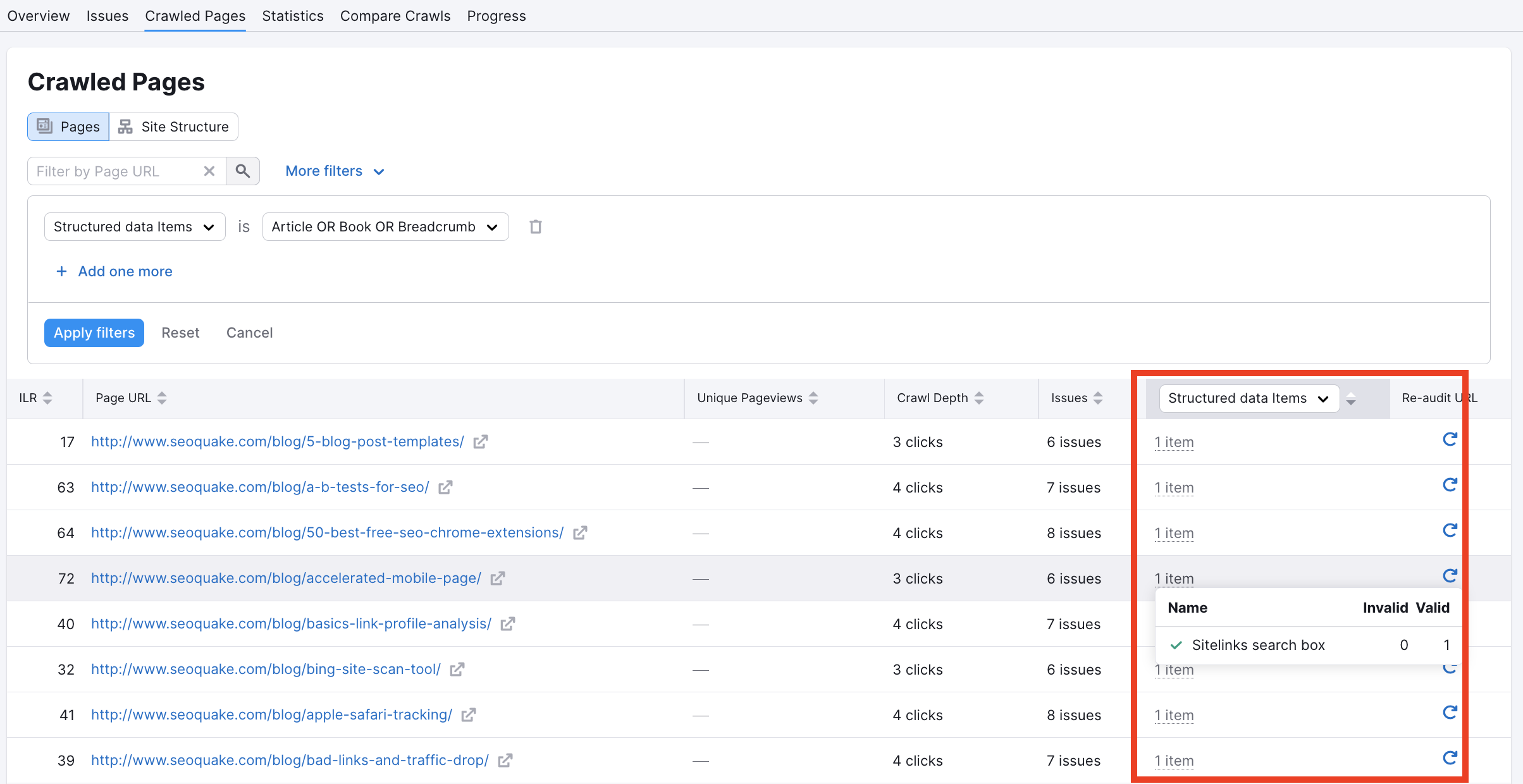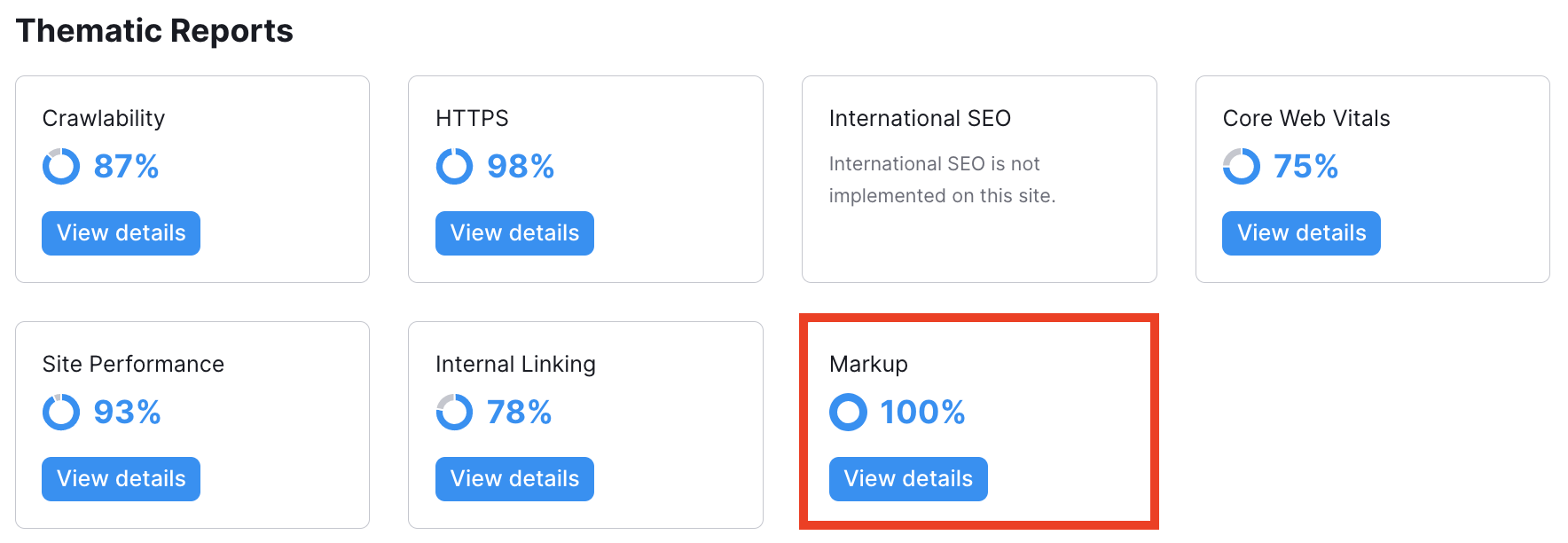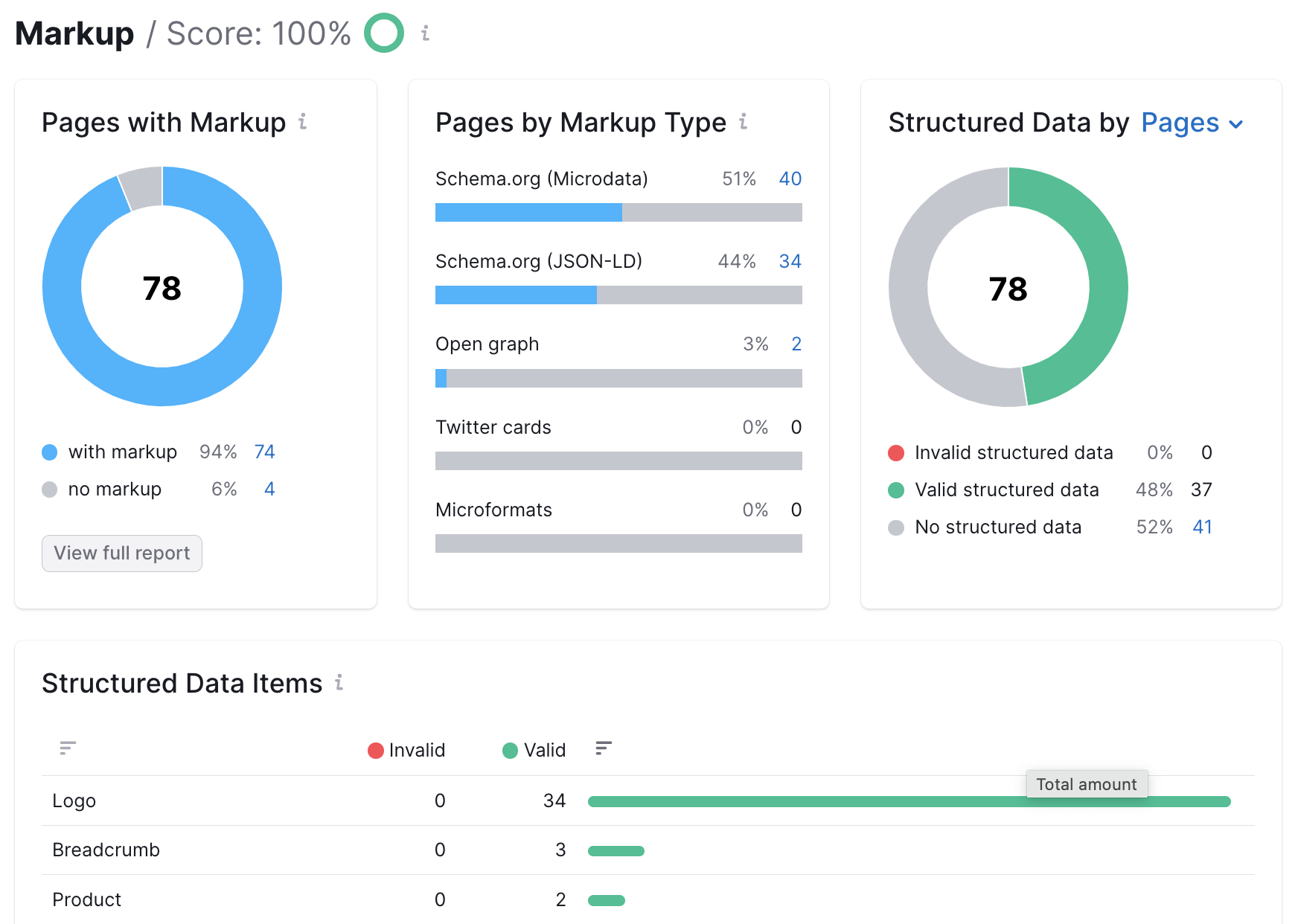What do the Structured Data Markup Items in Site Audit Mean?
To better understand the Structured Data items meaning, let’s start with the basic terms.
What is Structured Data?
Structured Data refers to a code created using schema.org vocabulary that helps your site pages appear in search results in a specific and much richer way (Rich Results or SERP Features).
Using Structured Data, you provide Google with detailed information about your page content. As a result, your site can win special search results – SERP Features (What SERP Features can Semrush Track?)
For example, a recipe page with valid structured data can appear in a graphical search result. Users can see a recipe’s picture, ingredients, calorie count, and cooking time without visiting a website. If a site gets into an instant result, people are more likely to click through to the webpage.
.png)
To be able to appear in Rich Results, you need to:
- Add a piece of code from schema.org to the page. Schema.org is a large collection of code examples. Google uses some of them to pull out the relevant data from your website and build Rich Results (there are 29 Structured Data items that Google defines.) For instance, How-to (a set of steps to complete a task), Local Business (business details, including open hours, ratings, directions), Product (information about a product, including price, availability, and review ratings), etc.
- Use one of three formats that Google supports, e.g. one of three ways to write a code: Microdata, JSON-LD, RDFa. These formats are called markups.
- Fill the required properties for an item following Google requirements (defining more recommended features can make it more likely that your information can appear in Reach Results).
Site Audit feature for markups
Exploring Structured Data items
The Site Audit tool can explore Structured Data items for each URL and identify which pages are eligible for being in Rich Results.
Let’s say you’ve noticed that your competitor is outranking you winning a SERP Feature – now you should check whether the markup is implemented on your page.

Semrush recognizes structured data items in the format of Microdata and JSON-LD. Schema.org RDFa items are significantly less used, and we currently do not support them. To validate RDFa, we recommend using the Rich Results Test Tool.
From 29 Structured Data items that Google defines, Site Audit determines 24 top-level items (we don't support items in beta and with limited access).
Please note: our tool does not recognize properties that were set using itemref attribute. Google Bot is able to identify these properties so be sure to double-check it with the Rich Results Test Tool.
Verification of Structured data objects
There are two types of verification:
- That there are no fields that are not described in schema.org
- That all the required properties according to Google documentation present
Thematic report
Thematic report is a good starting point for analyzing what is and what is missing on the site:
- Look for which SERP Features the site doesn’t rank for (you can do that in Position Tracking or Organic Research).
- Use Site Audit to check whether the necessary markup is added and is valid.

Which Structured Data items does Site Audit recognize?
Please note: we use the same vocabulary as Google does, but it can differ from schema.org vocabulary. Here’s a list of all currently supported Site Audit Structured Data items and how they are indicated in schema.org:
| Data item | Schema.org @type |
|---|---|
| Article | NewsArticle or BlogPosting or Article |
| Book | Book |
| Breadcrumb | BreadcrumbList |
| Carousel | ItemList |
| Course | Course |
| COVID-19 announcements | SpecialAnnouncement |
| Dataset | Dataset |
| Employer Aggregate Rating | Employer Aggregate Rating |
| Estimated salary | MonetaryAmountDistribution |
| Event | Event |
| Fact Check | ClaimReview Claim (soon) Rating (soon) |
| FAQ | FAQPage |
| How-to | HowTo |
| Job posting | JobPosting |
| Local Business | LocalBusiness, including 148 specific types |
| Logo | "@type": "Organization" and have field "logo": |
|
Movie |
Movie |
| Merchant listings | Product |
| Product Snippets | Product |
| Product | Product |
| Q&A | QAPage |
| Guided recipe | Recipe |
| Recipe on search | Recipe |
| Review snippet | Review AggregateRating |
| Sitelinks search box | WebSite with potentialAction: [{ @type: "SearchAction" |
| Site names | WebSite |
| Software App | SoftwareApplication |
| Video | VideoObject |
Please note: Structured Data items that appear after rendering the JavaScript code (such as the one provided with the Google Tag Manager) will be recognized only if JS-rendering is enabled.

Kindly note that this feature is available on a Guru and Business plan only.
To validate those, open the page in a browser –> click “View Page Source” –> copy the page code –> paste the code into the Rich Results Test tool.
.gif)
- What Issues Can Site Audit Identify?
- How many pages can I crawl in a Site Audit?
- How long does it take to crawl a website? It appears that my audit is stuck.
- How do I audit a subdomain?
- Can I manage the automatic Site Audit re-run schedule?
- Can I set up a custom re-crawl schedule?
- How is Site Health Score calculated in the Site Audit tool?
- How Does Site Audit Select Pages to Analyze for Core Web Vitals?
- How do you collect data to measure Core Web Vitals in Site Audit?
- Why is there a difference between GSC and Semrush Core Web Vitals data?
- Why are only a few of my website’s pages being crawled?
- Why do working pages on my website appear as broken?
- Why can’t I find URLs from the Audit report on my website?
- Why does Semrush say I have duplicate content?
- Why does Semrush say I have an incorrect certificate?
- What are unoptimized anchors and how does Site Audit identify them?
- What do the Structured Data Markup Items in Site Audit Mean?
- Can I stop a current Site Audit crawl?
- How to Disable JS Rendering and Inspect a Page
- Configuring Site Audit
- Troubleshooting Site Audit
- Site Audit Overview Report
- Site Audit Thematic Reports
- Reviewing Your Site Audit Issues
- Site Audit Crawled Pages Report
- Site Audit Statistics
- Compare Crawls and Progress
- Exporting Site Audit Results
- How to Optimize your Site Audit Crawl Speed
- How To Integrate Site Audit with Zapier
- JS Impact Report
